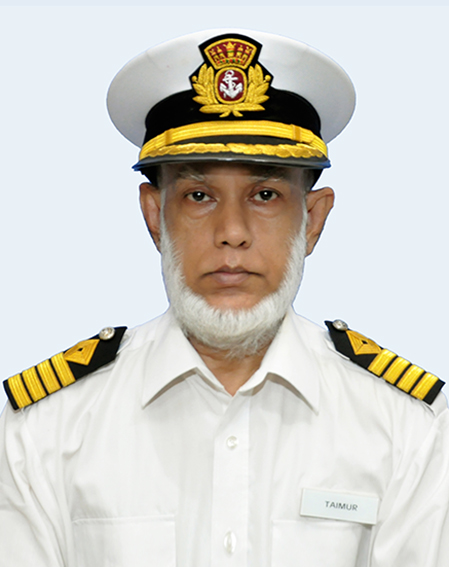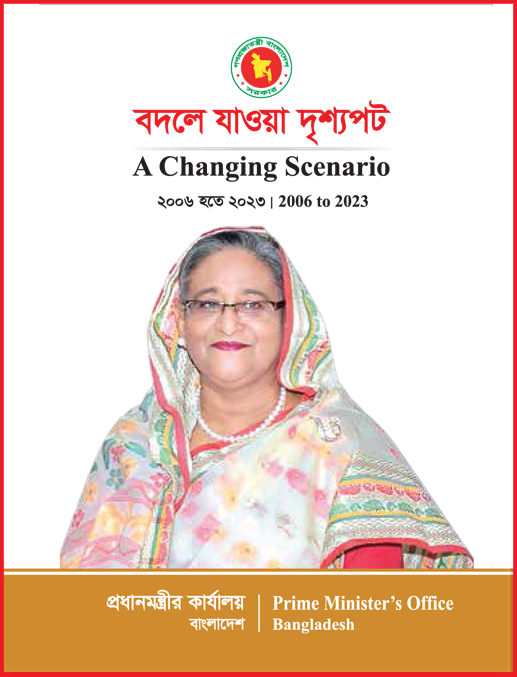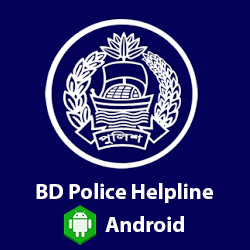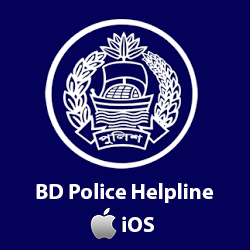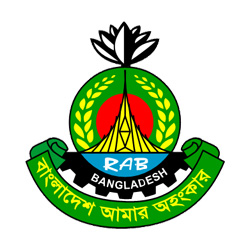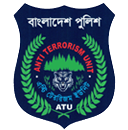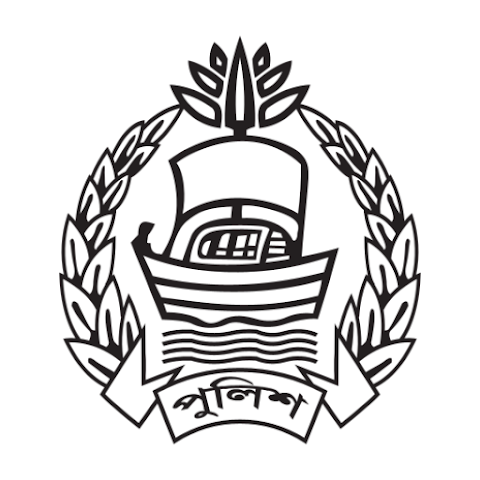ঐতিহাসিক পটভূমি
Recorded maritime history says that during 50,000 BC people of South Asian region went down to the pacific islands with wooden sailing ships. And the human civilization spread over the other parts of the world through such sea-expeditions.
With one of the largest river networks, one of the largest bays, largest delta, longest unbroken sea-beach, one of the oldest sea-ports, over 60,000 seafarers during the first half of 20th century, ancient wooden shipbuilding heritage and recent modern ocean-going shipbuilding impulse – Bangladesh is truly a maritime country. Besides, we are keeping world shipping green through the process of safe recycling of scrapped ships! ‘Made in Bangladesh’ wooden ships had been used in Turkey, China, Portugal and Germany during 13th-18th centuries. Therefore, Bangladesh possesses rich maritime heritage and current professional feat as well.
World scenario was changing fast after the WWII (1939-46). Pakistan along with East Bengal (Bangladesh) became independent in 1947 from British rule. Thereafter, the then Pakistan Government looked into developing various industrial training facilities. As such a scheme for establishing a marine academy beside Bay of Bengal had been sanctioned in 1952. Juldia Point (valleys of Juldia-Rangadia) at the Karnaphuly river-mouth at Bay of Bengal was chosen for the planned academy. Interesting to note that the reason was to create a ‘ship-like environment’ due to geographical location the Juldia Point was considered as it was almost like a ship but not floating! Such suitable facility/location was unique in the country and was not available from Suez to South-East Asian countries except India. (Project Plan – Development of Marine Academy, Phase – II [1973-1980])
Building basic infrastructure commenced. The establishment budget was Taka 31.19 lakhs in 1952, then increased to Taka 53 lakhs in 1959 and finally to Taka 58.3 lakhs in 1961. The initial project was completed with the aim of training 22 Nautical Cadet Officers and 22 Marine Engineering Cadet Officers. The new-built ‘Mercantile Marine Academy’ went into functioning from 3rd September 1962.
Afterwards, during our Great Liberation War 1971 the then Pakistan Government left this Academy abandoned. Immediately after liberation, Bangabandhu Sheikh Mujibur Rahman started it as Marine Academy, Bangladesh i.e. Bangladesh Marine Academy with appointing Capt. (Merchant Marine) M L Rahman as the Commandant (first Bangalee Commandant). Bangabandhu also took a project titled “Development of Marine Academy (1973-1980)” and could raise the Academy at the forefront of maritime professional excellence in South Asia.
TIME LINE: 1952 – 2020
| 1952: | Government took the decision of establishment of a Marine Academy at Chittagong. |
| 1962: | Mercantile Marine Academy was established under Colombo Plan; commenced functioning from 3 September 1962. |
| 1971: | Pakistan Government left MMA abandoned. |
| 1972: | Bangabandhu started it as “Marine Academy, Bangladesh” i.e. “Bangladesh Marine Academy” and appointed Capt. M L Rahman as the first Bangalee Commandant. |
| 1973: | A Project titled “Development of Marine Academy” was launched by Bangabandhu. |
| 1975: | Prime Minister Capt. M Mansur Ali visited the Academy and attended the 10th Batch Cadets’ Graduation Parade as the Chief Guest. |
| 1976:
|
Chief Engineer of Marine Academy Mr. Ken R G Rotter introduced 4 years’ Engineer Cadet Training Scheme at the Academy in accordance with the UK Merchant Navy Training Board. |
| 1977: | British Prime Minister Mr. James Callaghan visited the Academy. |
| 1980: | Mr. Chandrika Prashad Srivastava, Secretary General of IMO, visited the Academy. |
| 1987: | Ship simulator (Navsim-4) was collected for training. |
| 1989: | The project titled “Development of Marine Academy” has been completed successfully. |
| 1990: | Marine Academy achieved the coveted recognition as one of the 14 branches of World Maritime University (established by IMO in 1983). |
| 1992: | Under the certification of University of Chittagong, 2 years’ Bachelor of Science degree course has been introduced. |
| 1996: | Under the certification of National University, 2 years’ Bachelor of Science degree course has been introduced. |
| 1996: | The new Governing Body (current) of the Academy has been formed. |
| 2000:
|
The names of the 2 disciplines of the Cadet Training – Nautical and Engineering have been formally & officially renamed as the Pre-sea Nautical Science and Pre-sea Marine Engineering respectively. |
| 2000: | Ensuring complete compliance to the requirements of the STCW ’ 95 Convention,Bangladesh has been duly included in the IMO’s White. |
| 2003: | Under the certification of National University, the 3 years’ Bachelor of Maritime Science degree course started. |
| 2004: | Plan taken in hand to enhance Bangladesh Marine Academy into a Maritime University. |
| 2007:
|
The Academy has been awarded with the “World Maritime Day Award” as a recognition for providing maritime training at international standard. |
| 2008: | European Commission (EMSA) audited the Academy (recognised in 2011). |
| 2009: | A project titled “Enhancing Capacity of Marine Academy” has been commenced. |
| 2009: | A programme titled “Modernization of Training Facility” has been commenced. |
| 2010: | Academic link (for STCW 2010) with AMC Australia. |
| 2011: | European Commission (EMSA) recognized the Academy. |
| 2011: | Hon’ble Prime Minister Sheikh Hasina visited Academy on 26 Feb 2011 & unveiled Inaugural Plaque for Sheikh Mujib Maritime University. |
| 2011: | IMO SecGen Efthimios E. Mitropoulos visited on 13 Jan 2011 and inaugurated the Seafarers Memorial. |
| 2011: | IMO Mission on 28-29 March 2011 (STCW 2010). |
| 2011: | All courses revised according to STCW 2010 requirements. |
| 2012: | Female Cadets training introduced. |
| 2012: | e-Learning & CBT introduced. |
| 2012: | Employment Drive in cooperation with IMEC & SSA (Singapore). |
| 2013: | New approved Projects: Training Ship & Nav/Engine Simulators. |
| 2013: | IMO SecGen Mr. Koji Sekimizu has visited Academy on 25 June. |
| 2014: | Singed MOU with WMU for joint Academic Program |
| 2014: | Membership with GOBTC. |
| 2015: | 3-years’ Bachelor Pass degree course has been upgraded to 4-years’ Honours one. |
| 2015: | Cadets’ Bachelor Degree course got recognized by Maritime & Port Authority Singapore. |
| 2015: | Commandant (Dr. Sajid Hussain) was a Panel Member in WMU Alumni Regional Conference in Myanmar (Jan 2015). |
| 2016: | Achieved ISO 9001:2015 Quality Certificate from DNV-GL. |
| 2016: | Commandant (Dr. Sajid Hussain) has been appointed as an IMO Maritime Ambassador by formal nomination of GOB. |
| 2017: | e-Tendering & e-Filing Introduced. |
| 2017: | Commandant Dr. Sajid Hussain is a Member to IMarEST London Council. |
| 2018: | MOU with Tolani Maritime Institute, India. |
| 2019: | Upgraded status as a ‘Partner Institution’ of Word Maritime University (WMU), Sweden. |
| 2019: | BMA Commandant (Sajid Hussain FIMarEST) has been awarded with the “Outstanding Contribution in Marine Education Award 2019” by the IMarEST |
| 2019: | Achieved “Centre of Excellence” of Nautical Institute (NI London) and Institute of Maritime |
| 2019: | Achieved “Centre Recognition” of UK Merchant Navy Training Board. |
| 2020: | BMA Commandant (Dr. Sajid Hussain CEng CMarEng FIMarEST) elected as a Trustee of the Institute of Maritime Engineering, Science & Technology (IMarEST London) |










